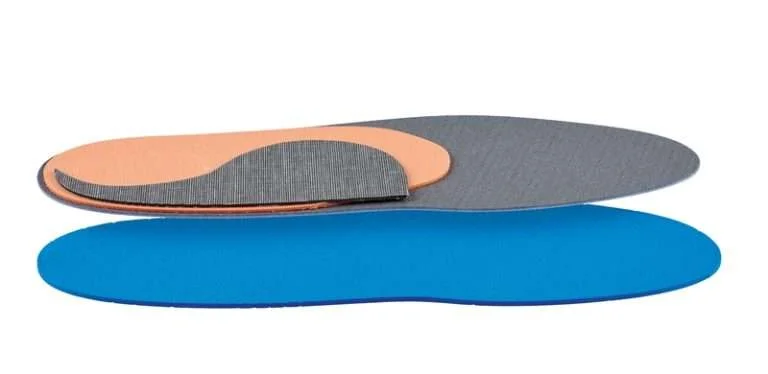
Are you a running enthusiast, an active player, or just someone who stands for a significant amount of time? The right support is always a high requirement. Most significantly, finding the ideal insoles for people who have flat or high arches feet can greatly contribute to comfort, performance, and the optimal condition of their feet. Here’s a detailed guide to find your perfect Insole for Flat Feet.
Understanding Flat Feet and High Arches:
Before delving into the world of insoles, it’s important to understand the unique characteristics of flat feet and high arches.
Flat Feet:
Wide, common, and normal defects of the foot, pes planus, results in a flattening or “collapse” of the arch of the foot. This condition results in the flattening of the entire sides of the sole of the foot. The same happens with the bottom of the foot without the force generated by the foot causing an upward curve. If the curve of the arch is compromised and cannot maintain its biomechanical structure or function, it results in an abnormal functioning of the biomechanics. Consequently, biomechanical overpronation is observed. When they are standing still and walking, the foot over-rotates to the inside as it moves throughout the gait cycle. The most predominant weight-bearing joints, namely the ankle, knees, hips, and the lower back, are overworked as a result of overpronation. Additionally, the death strain due to the abnormal alignment of the foot flat feet results in other musculoskeletal anomalies such as plantar fasciitis, shin splints, and Achilles tendonitis.
High Arches:
On the other hand, high arches also called pes cavus, are the excessive upward curvature of the arch of the foot. This is when little surface area of the foot is in contact with the ground, and the arch seems high . High arches are linked with underpronation also known as supination. Supination is the inadequate rolling in of the foot during the gait cycle. Signs of high arches may include heel and ball of foot pain. The unsoundness of the foot is exposed in the fact that the foot may not adequately absorb shock; thus, pressure is commonly distributed more along the edges, leading to ankle sprains, stress fractures, and calluses.
Identifying Your Foot Type:
The first step in finding the right insoles is identifying your foot type. You can do this by conducting a simple wet test at home or seeking assistance from a podiatrist or footwear specialist.
For Flat Feet:
It is generally manifested by a trademark footprint, in which the unaffected foot leaves a complete impression of the sole without any arches outlined in the wet test. The lack of arch support is also associated with multiple types of discomfort and pain. For example, continuous pain in the arch region is one of the most common symptoms, as the absence of the arch itself places excessive tension on the ligaments and muscles keeping the sole together. Heel pain, which may be caused by plantar fasciitis among other conditions, is another frequent symptom due to the uneven distribution of weight and overpronation. Additionally, general foot soreness is one of the more consistent complaints associated with the condition. This is due to the exhaustion of feet that do not have natural arches, which tire quickly while standing or walking and require resting.
For High Arches:
In contrast, those with high arches have a distinguishing footmark – a narrow, curved imprint with a substantial hole in the middle of arch area when sphing pedometry. In addition to a high aesthetic appeal, insole for high arch has its own set of issues. Heel pain is a frequent problem since elevated arches increase the burden on the heel bone owing to the smaller areal of foot contact with the ground. The discomfort in the ball of the foot is frequently reported, as the forefoot is overloaded with bodily weight’s majority gathering in it, increase the chance of maladies like metatarsalgia. Moreover, diminished arches cause ankle instability, as this diminished support makes the entire ankles less stable, resulting in more sprains and strains during exercise.
Choosing the Right Insoles:
Once you’ve determined your foot type, it’s time to select the appropriate insoles. Here’s how to find the best fit:
Arch Support:
If you have flat feet, the best insoles for your shoes are those with firm arch support. Such insoles help redistribute weight across the foot evenly, compensating for the deficit in support for the arch and decreasing the tendency to overpronate. Overpronation refers to the foot rolling excessively inwards and can lead to various issues like shin splints, plantar fasciitis, or knee pain. On the other hand, if you have high arches, you should choose insoles that prioritize cushioning. High arches mean that you have less surface area of your foot in contact with the ground, so more force is exerted on specific spots such as your heels or the balls of your feet.
Cushioning:
However, cushioned insoles are important regardless of the type of foot. The most popular solutions are gel or other foam-based insoles suitable for shock absorbance. In the case of flat feet, the problem is the absence of the natural arch, which can cause discomfort due to the elevated pressure on the foot model. If proper support is not provided, cushioned insoles create a barrier between the foot and the ground, which significantly reduces discomfort. A similar effect is observed with high arches when the lack of contact leads to increased pressure and the risk of pain and tiredness, especially in case of high-impact loads.
Stability Features:
Another critical aspect to consider while choosing insoles, besides arch support and cushioning, is stability insoles. Heel cups, especially deep heel cups, help to stabilize the heel and ensure its proper alignment. For individuals with flat or high arches, keeping the heel stable is crucial, as any instability will only amplify problems such as overpronation or underpronation. Because instability in the heel causes the foot to twist, insoles with stability features ensure that the heel stays in place and does not move when in use. As a result, it decreases your susceptibility to foot misalignment-related injuries like ankle sprains or stress fractures.


